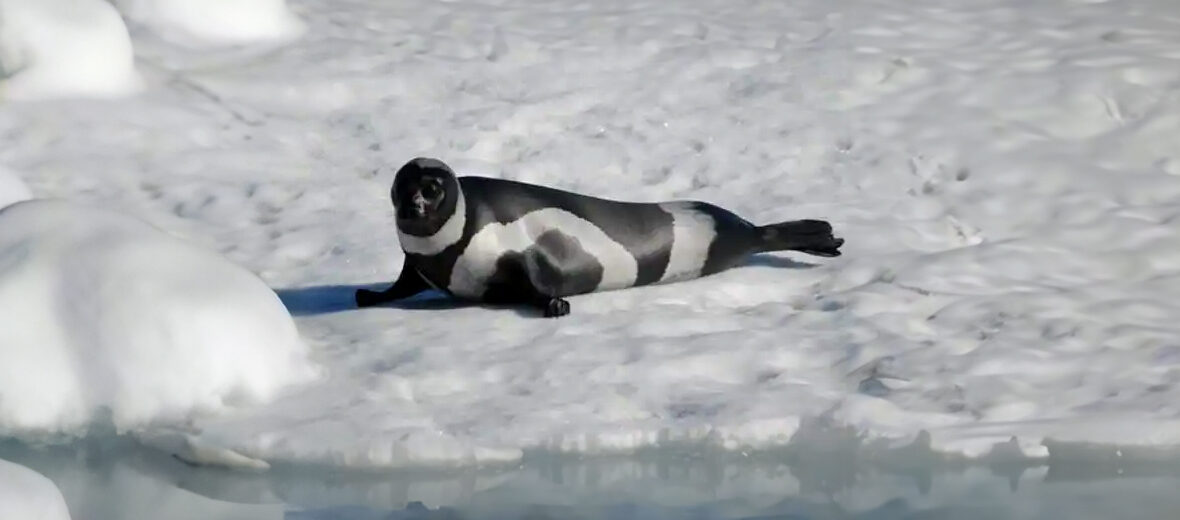
The ribbon seal is a member of the true seal family. This means they lack ear flaps, but they have ear holes instead. They are located in the Arctic and Subarctic regions of the North Pacific Ocean, notably in the Bering Sea as well as the Sea of Okhotsk. They face the threats of overfishing; occasional bycatch (getting captured by mistake via fisheries); and climate change, that causes habitat alteration and disrupts the breeding and availability of their food source. However, they are abundant enough to be listed as Least Concern by the IUCN.
First the Stats…
Scientific name: Histriophoca fasciata
Weight: Up to 209 lbs.
Length: Up to 5.2 feet
Lifespan: Up to 25 years
Now on to the Facts!
1.) There were approximately 183,000 wild individuals as of 2015. However, recent estimates put their numbers somewhere closer to 300,000 to date.
2.) They are the only living species in the genus Histriophoca.
3.) Ribbon seals have a large inflatable air sac that is connected to the trachea and extends on the right side over their ribs. This sac is larger in males than in females, and is believed that it is utilized to generate underwater vocalizations, possibly for luring in a mate.
4.) Orcas and great white sharks are their primary predators.
5.) Like other seals, they are sexually dimorphic in that males are larger than females.
But wait, there’s more on the ribbon seal!
6.) These seals have been spotted as far south as Morro Bay, California. But a sighting this far south is very rare.
7.) Ribbon seals are quite indifferent to being approached rather closely by boats before becoming spooked.
Did you know…?
When these seals are captured in nets, they have been known to engage in feigning death (faking their death).
8.) Fish, like pollock and cod, squid, octopus, and crustaceans make up their diet.
9.) Ribbon seals are polygynous (males mate with multiple females).
10.) Females undergo up to a 4 month delayed implantation (where the embryo doesn’t implant directly after fertilization). This allows the female to give birth when the sea ice is at its greatest point.
But wait, there’s still more on the ribbon seal!
11.) The female undergoes up to an 11 month gestation (pregnancy) that yields a single pup.
12.) Pups are weaned in up to 6 weeks.
13.) The female’s milk is very high in lipids and proteins that cause a rapid growth in their pup.
14.) Young ribbon seals look just like young harp seals, and as such, they were hunted for their fur. However, since they do not form herds, ribbon seals were much more challenging to catch than harp seals.
Now a Short Ribbon Seal Video!
Be sure to share & comment below! Also, check out the Critter Science YouTube channel. Videos added regularly!
Want to suggest a critter for me to write about? Let me know here.
Some source material acquired from: Wikipedia & IUCN
Photo credit: Animal Life Expectancy




